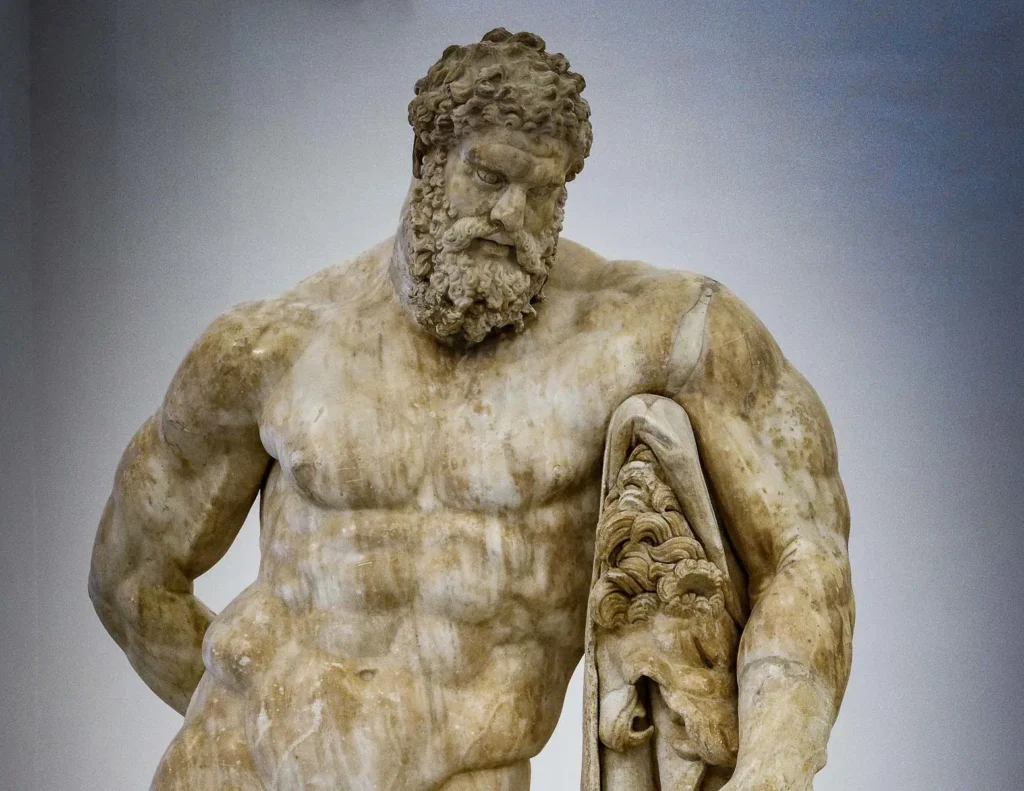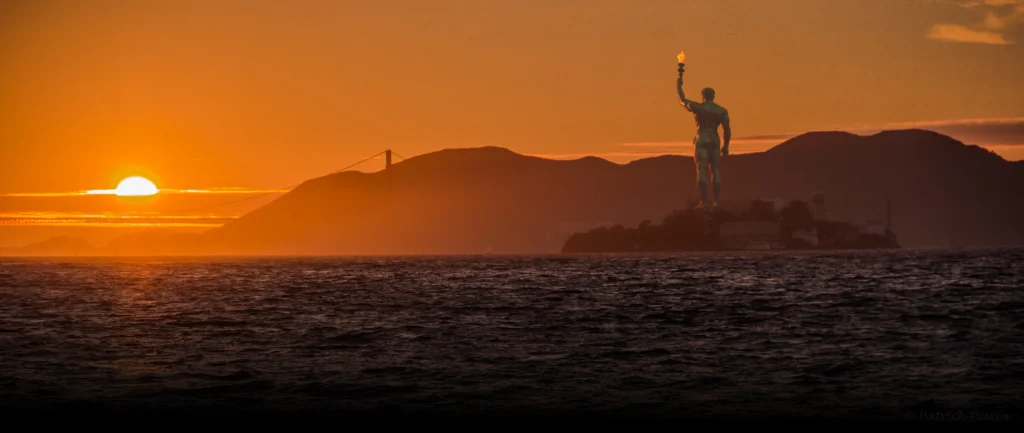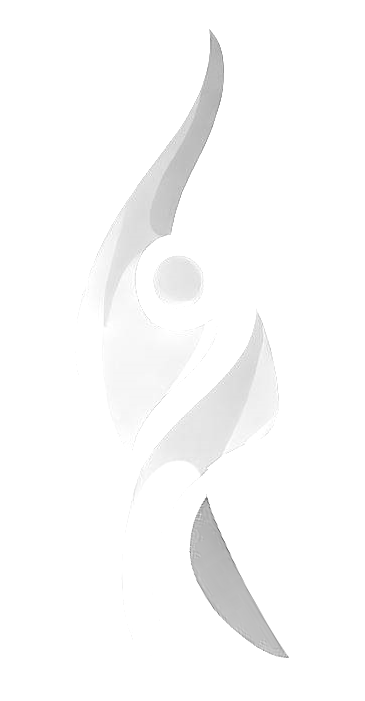Man, the Sculptor
Man is the sculptor and the sculpted. Just as Prometheus fashions Man out of clay, like a sculptor would, and imbues him with technology, he propagates Man as the self-creating force of the universe.
“I overcame myself, the sufferer; I carried my own ashes to the mountains; I invented a brighter flame for myself.” – Friedrich Nietzsche, Thus Spoke Zarathustra
In recent times, the Übermensch, the overman, is the self-sculptor in the image of Prometheus who overcomes his ape-like and slave-like nature and forges himself from a new vitalistic power and agency.
In the American covenant: Life, Liberty and the Pursuit of Happiness, the Pursuit of Happiness at its most basic refers to the capacity and the right of an individual to form his own conscience. What the American founders were too gentlemanly to explain is that the Pursuit of Happiness indicates the archaic Germanic “freedom,” or Freiheit, a key tenet of Nordic, Germanic and Anglo-Saxon societies. Freiheit is the self-ennobling that comes from a sense of human purpose achieved in pursuing what is beautiful, meaningful, and sacred, indeed what is ideal and lofty, and doing so in the context of creative works, industriousness and Faustian adventuring.
In other words, Manifest Destiny.
The refined conception of Manifest Destiny and the Pursuit of Happiness is the Promethean act of being the self-sculptor, overcoming one’s ape-like nature in forging one’s own vitalistic power.
This self-determinism has always been the root of the West, which found its way into Germanic adaptations of Middle Eastern Christianity, which was essentially a precursor to Protestantism and Protestantism itself. This force moved onward into the Christian groups in the United States and even further into the self-improvement industry. These modern expressions are a remnant of the archaic, vitalistic heroism of the old north prior to Rome, surviving under Charlemagne, then flourishing again in the Renaissance. Indeed, the apex of the Renaissance was the American Revolution.
Today, deconstructionism in sculpture and art is one flank in a worldview war against Manifest Destiny and the Pursuit of Happiness. Prometheus in a sense represents a kind of dialectic force that is always inexhaustibly rising up into a more powerful ideal, juxtaposed to statism, collectivism, unconsidered mass consciousness, and all the other forces which are by nature opposed to individual self-determinism. Those are the suppressive forces of Zeus, the devas, the bolsheviks, the deep state, etc.

Fundamentally without the Pursuit of Happiness, we are set adrift with no individual sense of meaning. We live day-to-day, moment-to-moment in relation to contingency and consumption. The point of civilization, and great art, is to raise people out of this trough and impel them to look upwards, towards the sky, upwards to higher forms or the prospect of archetypal forms, towards ancient religions or future religions, towards God or the gods, upwards to the idea it is necessary they are there even if you don’t believe they are, upwards towards the ideal. This is the point of civilization, industriousness, inventiveness and great art.
The Heroic in art has been eye-wateringly disprivileged in favor of the slave morality. Orthodoxy wants us to not understand what vitalistic power really means so we don’t upset the apple cart rolling on an axel of a phony currency. This has merely accompanied the same in our sociology and politics.
And so, Prometheus visits us as a terrifying force of destruction. But truthfully only a source of creative destruction in the fashion of self-sculpting and will to power. He should come with a vengeance, but with a vengeance toward all things unworthy, toward all things aligned with arbitrary, artificial or recalcitrant stasis.
There is no mistake, it is war. It has been a war for thousands of years. The ancients understood this and imbued the mythos with these archetypes. Prometheus himself led a rebellion against the Olympic gods in the Titan War. This same war is fought between the forces of kitsch, of meritless stasis, subversion and manipulation, of frog boiling and mid-level violence, and between the vitalistic, upward moving power of creative will, the individualistic generator of inequality and the civilizing works of Manifest Destiny. It is a war of annihilation.
Man is both the sculptor and the sculpted. That man is creation of his own imagination and his own hands. He is impelled to chisel away at his old self in favor of the newer, more ideal one to be forged. By this we understand the bold task before us: to shape our flesh into a creature of formidable beauty, nobility, and power. This time of aesthetic stagnation is beginning to awaken a force within our culture which champions a more vital way of being.
It could well have been Epimetheus, the forgetful titan, to imbue Man with the nature of the apes and slaves as he did the livestock and creatures of earth at Zeus’ behest. But Prometheus claimed Man for his own and fashioned him with painstaking craftsmanship from the clay. The primordial act of sculpting Man to free him from the fates was the act of an artist who destroys himself for his works as an exertion of his strength, ideals and beauty into the world. The artist exhausts himself for the love of his works. And it was this act of artistry which set in motion the eventual torture of Prometheus by Zeus. For in the sculpting, he deprived Olympus of a race who would be slaves. It was an act of Untergehen, of down-going.

This down-going was an act of making life itself into a work of art, an act of excellence and power. As Nietzsche described, “a living thing seeks above all to discharge its strength – life itself is will to power.” It was this excellence and power infused into Man which seeks the mastery of open space, exerting itself into the void, into the undiscovered and the un-invented. It is these “aristocratic” properties that by their nature threaten the cohesion of the totalitarian and fatalistic represented by Zeus. The essence of great sculpture espouses aristocratic down-going. It is therefore in some sense heroic and anti-establishment. It expresses the valuation of ideals, exceptionalism and creation over comfort, convenience, and self-preservation. The Colossus is meant to deeply inspire all who behold it, like a spear into one’s being, to rise to these ideals, to find them within and grasp them, not relinquish them, and fashion their lives, too, into great sagas and art works.
For it is so that great culture and human excellence are not compatible with equality. Equality before the law, yes, equality in moral status perhaps, but not equality in personal capacity. This is of course, the true diversity and the true source of vibrant dynamism and plentitude in our economic lives. Suppression of the inequality of personal capacity, of the true individuated beauty, purpose and skill of humans, is central fulcrum economic and also cultural degeneration.
Today, power gets a bad rap. It’s incorrectly associated with authoritarian violence and coercion. And somehow we know that true to form, the authoritarian publicly denigrates power and equates it with control in order to disincentivize the truly powerful to compete for the control sought by the authoritarian himself. Yet control is a form of weakness, a form of codependent secondhander-ism. In art, this is done through a tyranny of kitsch – a numbing and subliminal patronizing, speaking to the culture as though it were composed of infants, over-sentimentalizing and stripping away excellence and artistic merit.
The powerful in contrast are only concerned with expressing their own vitality and nature unto life. In fashioning into a greater and greater ideal, the greater accentuations in the heart of things, the mediocre is pushed out and vanishes. The great, heroic figures possessed a great heat and fire for living. They architected their lives like sagas or works of art. They were the ones to drive culture forward. Likewise, a disintegrating culture is a culture that tears down symbols of its heroes, or worse, never builds them at all.

The hero is an individual who combats adversities through strength, courage and power, and also uncovers some greater element of truth. The hero has been at the center of high culture throughout Western history. Homer, Rossini, Shakespeare, and Donatello all deal with the heroic. This heroic literature, opera, theatre, and sculpture is replete with themes such as vitalism, masculinity, power, and Faustian adventurism. In heroic art, the fate of the masses often rests on one individual, an individual of great power, who is held to a different standard to the rest of society. He is called to a down-going of lone suffering chained to the rocks, and thereby an overcoming and a liberating. For this reason, by some the heroic is also perceived as inegalitarian and quasi-fascistic. The heroic has been deemed inherently reactionary or bourgeois, and therefore disprivileged.
The disparaging of the heroic in contemporary culture is evident across any layer of consideration. European, and some American, cities display heroic statues of explorers and military figures, but only erected before the 1950’s, and have not really been erected since. The famous empty plinth in Trafalgar Square demonstrates this. Originally intended to hold an equestrian statue of the king, it has remained empty for 150 years, trapped in the quandary of what to install when the heroic is invalidated.
Artistry must start with a fresh and organic root. Most contemporary art falls flat because it is unrooted and highly sentimental toward the artifacts of a contingent popular audience motivated by trend – often wooden and pastiche in its finalization. An artist today is called to break away from the Postmodern conceptual trend and to also crash through a stagnant, conservative view to develop fresh roots.
– FEN DE VILLIERS

De Villiers is in some sense indicating that life responds to courage most of all. The archetype that is at once primordial and archaic, and also in its nature always oriented toward the undiscovered country of the future, toward creating and bringing about new worlds from fresh roots, this archetype is rooted in courage. The war against the Epimethean self is just as intractable for most as the war against fate and the gods. This conflict finds its siren call in the environment around contemporary art.
Hatred of sculpture, whether by Antifa or ISIS, is in no uncertain terms a product of a morality predicated on unselfing and obedience. It expresses the hatred of the notion that Man himself, not Olympus, possesses creative power. It is a call that one should not be allowed to express the excellence and down-going of the hero because it would subvert Zeus’ desire to make one a slave. “Let a thousand poppies bloom…”
Yielding its former spiritual intensiveness, civil society has become geographically extensive. Does civil society in the West have the ability to overpower the fatalist forces of subversion and entropy? Is it called to build great things despite them?
Our Colossus is the lightning rod for all young heroic Americans to valorize and be encouraged by this heroic ideal. The Colossus speaks directly to the hearts of Americans, a new psychospiritual Radio Free America in the hands of the heroic and the sovereign citizen to invoke the courage to build, adventure, invent, tell the truth, strengthen, and pour the heart into great works. This is what monuments are for – a deep, tidal call into what is beautiful, creative and powerful. Let it be so in San Francisco Bay, and so with the West, to champion the greatest in Man.

